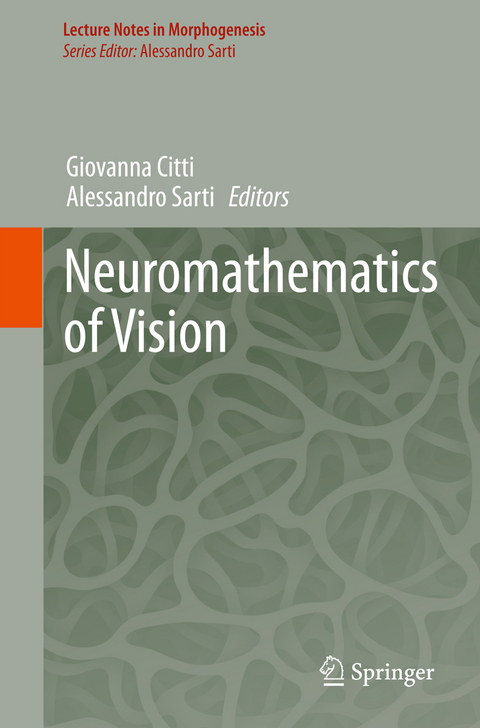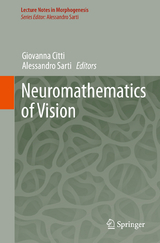Neuromathematics of Vision
Springer Berlin (Verlag)
978-3-642-34443-5 (ISBN)
This book is devoted to the study of the functional architecture of the visual cortex. Its geometrical structure is the differential geometry of the connectivity between neural cells. This connectivity is building and shaping the hidden brain structures underlying visual perception. The story of the problem runs over the last 30 years, since the discovery of Hubel and Wiesel of the modular structure of the primary visual cortex, and slowly cams towards a theoretical understanding of the experimental data on what we now know as functional architecture of the primary visual cortex.
Experimental data comes from several domains: neurophysiology, phenomenology of perception and neurocognitive imaging. Imaging techniques like functional MRI and diffusion tensor MRI allow to deepen the study of cortical structures. Due to this variety of experimental data, neuromathematematics deals with modelling both cortical structures and perceptual spaces.
From the mathematical point of view, neuromathematical call for new instruments of pure mathematics: sub-Riemannian geometry models horizontal connectivity, harmonic analysis in non commutative groups allows to understand pinwheels structure, as well as non-linear dimensionality reduction is at the base of many neural morphologies and possibly of the emergence of perceptual units. But at the center of the neurogeometry is the problem of harmonizing contemporary mathematical instruments with neurophysiological findings and phenomenological experiments in an unitary science of vision.
The contributions to this book come from the very founders of the discipline.
Landmarks for Neurogeometry.- Shape, Shading, Brain and Awareness.- From functional architectures to percepts: a neuro mathematical Approach.- Cuspless Sub-Riemannian Geodesics within the Euclidean Motion Group SE(d).- Psychophysics, Gestalts and Games.- Remarks on invariance in the primary visual systems of mammals.- Hebbian Learning of the Statistical and Geometrical Structure of Visual Input.
"This is one of the best books on cortical sensory modeling with the use of partial differential equations, and statistical reasoning included in multidimensional strategies. ... I highly recommend this book as a primary reference to vision scientists, students in vision, postdoctoral fellows and senior scientists in the field of cerebral cortical modeling." (Joseph J. Grenier, Amazon.com, June, 2015)
"This book takes the novel approach of considering the geometry of image processing by the visual cortex system of the brain. ... This book is an essential read for anyone conducting serious research in the field of neurogeometry of visual perception." (R. Goldberg, Computing Reviews, August, 2014)| Erscheint lt. Verlag | 20.2.2014 |
|---|---|
| Reihe/Serie | Lecture Notes in Morphogenesis |
| Zusatzinfo | XVIII, 367 p. 114 illus., 69 illus. in color. |
| Verlagsort | Berlin |
| Sprache | englisch |
| Maße | 155 x 235 mm |
| Gewicht | 710 g |
| Themenwelt | Mathematik / Informatik ► Informatik |
| Mathematik / Informatik ► Mathematik ► Angewandte Mathematik | |
| Schlagworte | Algorithmen • Algorithms for Computer Vision • Computervision • Connectivity Structure of the Visual Cortex • Functional Architecture of the Visual Cortex • Geometrical Models of Cortex Functionality • gestalt theory • Mathematical Modeling of Cognition • Neural origin of Spatial Representations • Neuromathematics • Neuroscience • Rigorous Mathematics of Neuroscience |
| ISBN-10 | 3-642-34443-7 / 3642344437 |
| ISBN-13 | 978-3-642-34443-5 / 9783642344435 |
| Zustand | Neuware |
| Haben Sie eine Frage zum Produkt? |
aus dem Bereich




